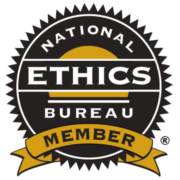Over-Looked Tax Breaks For Retirees
Preparing for taxes in retirement is one financial strategy move you can make to help keep more money in your pocket. And, to that end, there are several often-over-looked tax breaks that cater to retirees that you should be aware of.
The first potentially over-looked tax break to note is the spousal IRA contribution.
In most cases, you have to earn income to kick money into an IRA. But if you’re married and your spouse is still working, they can often contribute as much as $7,000 per year to a traditional or Roth IRA that you own.
But don’t forget the year’s total combined contributions to your IRA or your spouse’s IRA can’t be greater than $13,000 if only one of you is 50 or older or $14,000 if both of you are at least 50.
MEDICARE PREMIUMS
The next potentially valuable deduction is Medicare premiums. If you become self-employed after you retire – something that’s becoming more common – you may deduct the premiums you pay for Medicare Parts B and D as well as the cost of Medigap policies or Medicare Advantage plans.
One note on this one: You aren’t allowed to take this deduction if you’re still eligible for employer-subsidized health plan offered either by your employer or your spouse’s employer.
CHARITABLE GIVING
Giving money to charity is another potentially good way for retirees to reduce their tax burden a bit. Once you reach 70 ½, you can contribute to your favorite charities in a tax-friendly manner without having to deal with itemization.
The qualified charitable distribution, or QCD, allows you to transfer as much as $100,000 every year from a traditional IRA directly to a charity. If you’re married, your spouse can add an additional $100,000 from their IRA. The transfer isn’t considered taxable income and it counts toward your RMD.
Just note that you can’t also claim the transfer as a charitable deduction on your Schedule A.
GIFT TAX
While it’s true that not many folks need to worry about the federal estate tax, given that most people will be able to pass on a little more than $12 million to their heirs in 2022. Oh, and in 2022, married couples will be able to pass on $24 million. Not bad, right?
However, if there’s a chance the estate tax may become something you have to strategize for, you’ll want to utilize the annual gift tax exclusion. With this rule in 2022, you can give as much as $16,000 every year to any number of people without facing a gift tax. Your spouse can give that same person an additional $16,000, making the tax-free gift $32,000.
REAL ESTATE
You should also be aware of the potential for tax-free profit off the sale of a vacation home. Qualifying for this one is actually fairly simple. The home you’re selling must be your principal residence and you must have both owned and lived in it for a minimum of two of the last five years prior to the sale. But there is in fact a way to grab some tax-free profit from selling a vacation home.
For example, let’s say you sell your family homestead and utilize the break that makes as much as $250,000, or $500,000 if you’re married and filing jointly, of the profit tax-free. From there you move into the vacation home you’ve owned for many years. As long as that vacation home is your principal residence for a minimum of two years, some of the profit of an eventual sale will be tax-free.
These are just some of the potential tax breaks that are available to retirees, so be sure to work with a financial services professional to devise a retirement tax strategy that’s tailored to your needs.
SOURCE
https://www.kiplinger.com/retirement/603058/most-overlooked-tax-breaks-for-retirees

